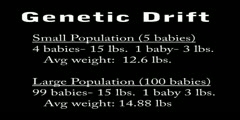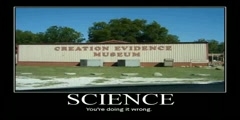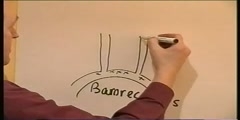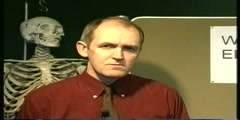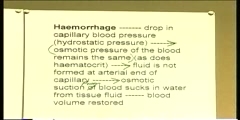Lec 14 - Faulkner -- As I Lay Dying, Part II
"Lec 14 - Faulkner -- As I Lay Dying, Part II" Hemingway, Fitzgerald, Faulkner (AMST 246) Professor Wai Chee Dimock traces Faulkner's appropriation of the epic genre through two conventions: the blurring of boundaries between humans and non-humans and the resurrection of the dead. She first reads Faulkner's minor character Tull and his relation to both mules and buzzards to draw out the "nature of manhood in poor whites." From Tull, she shifts focus to Jewel and suggests that his kinship with the snake and the horse foregrounds the narrative secrecy of Jewel's genealogy. As Addie Bundren's monologue reveals, Jewel's illegitimate father, the Reverend Whitfield, is similarly identified with both the horse, as the animal he rides, and the snake, whose Edenic behavior he parallels in his affair with Addie. 00:00 - Chapter 1. Humans and Non-Humans 03:50 - Chapter 2. The Epic Tradition and Homer's Cyclops 07:56 - Chapter 3. Cross-Species Kinship in Circe's Magic and Dante's Inferno 09:48 - Chapter 4. Tull's Animal Identification in As I Lay Dying 16:19 - Chapter 5. The Epic Function of Mules 21:55 - Chapter 6. Poor Whites as Buzzards 25:12 - Chapter 7. Jewel as Snake and Horse 28:22 - Chapter 8. The Mythic Horse, the Snake, and Scattered Representation 34:22 - Chapter 9. The Secretive Narrative of Jewel's Horse 42:10 - Chapter 10. The Epic Convention of Raising the Dead Complete course materials are available at the Open Yale Courses website: http://oyc.yale.edu This course was recorded in Fall 2011.
Here is the next lecture for this course
Lec 7 - Faulkner's The Sound and the Fury ...
48:21 | 2588 viewsLec 8 - Faulkner's The Sound and the Fury ...
45:59 | 2764 viewsLec 9 - Faulkner's The Sound and the Fury ...
51:04 | 2723 viewsLec 13 - Faulkner -- As I Lay Dying
48:18 | 1958 viewsLec 15 - Faulkner -- As I Lay Dying
49:50 | 2112 viewsLec 16 - Dying alone; The badness of deat ...
49:51 | 2945 viewsLec 3 - Hemingway's In Our Time, Part II
50:04 | 2191 viewsLec 5 - Fitzgerald's The Great Gatsby, Pa ...
50:09 | 2637 viewsHow Evolution Works- Forces (Part 2)
08:44 | 6636 viewsHow Evolution Works- Introduction (Part I)
08:29 | 7638 viewsBlood Pressure Part 3
10:00 | 8567 viewsFluid and electrolytes part 1
10:00 | 60294 viewsFluid and electrolytes part 2
10:00 | 27337 viewsFluid and Electrolytes Part 3
10:00 | 12008 viewsEnergy cycle in nature Part 1
14:55 | 8307 viewsNo content is added to this lecture.
This video is a part of a lecture series from of Yale
Lecture list for this course
Lec 1 - Introduction - Hemingway Fitzgerald Faulkner
Lec 2 - Hemingway's In Our Time
Lec 3 - Hemingway's In Our Time, Part II
Lec 4 - Fitzgerald's The Great Gatsby
Lec 5 - Fitzgerald's The Great Gatsby, Part II
Lec 6 - Faulkner's The Sound and the Fury
Lec 7 - Faulkner's The Sound and the Fury, Part II
Lec 8 - Faulkner's The Sound and the Fury, Part III
Lec 9 - Faulkner's The Sound and the Fury, Part IV
Lec 10 - Hemingway -- To Have and Have Not
Lec 11 - Hemingway -- To Have and Have Not
Lec 13 - Faulkner -- As I Lay Dying
Lec 15 - Faulkner -- As I Lay Dying
Lec 16 - Hemingway -- For Whom the Bell Tolls
Lec 17 - Hemingway -- For Whom the Bell Tolls
Lec 18 - Hemingway -- For Whom the Bell Tolls (continued)
Lec 19 - Hemingway -- For Whom the Bell Tolls (continued)
Lec 20 - Fitzgerald - Tender Is the Night
Lec 21 - Fitzgerald, Tender is the Night (continued)
Lec 22 - Faulkner, Light in August
Lec 23 - Faulkner, Light in August (continued)








